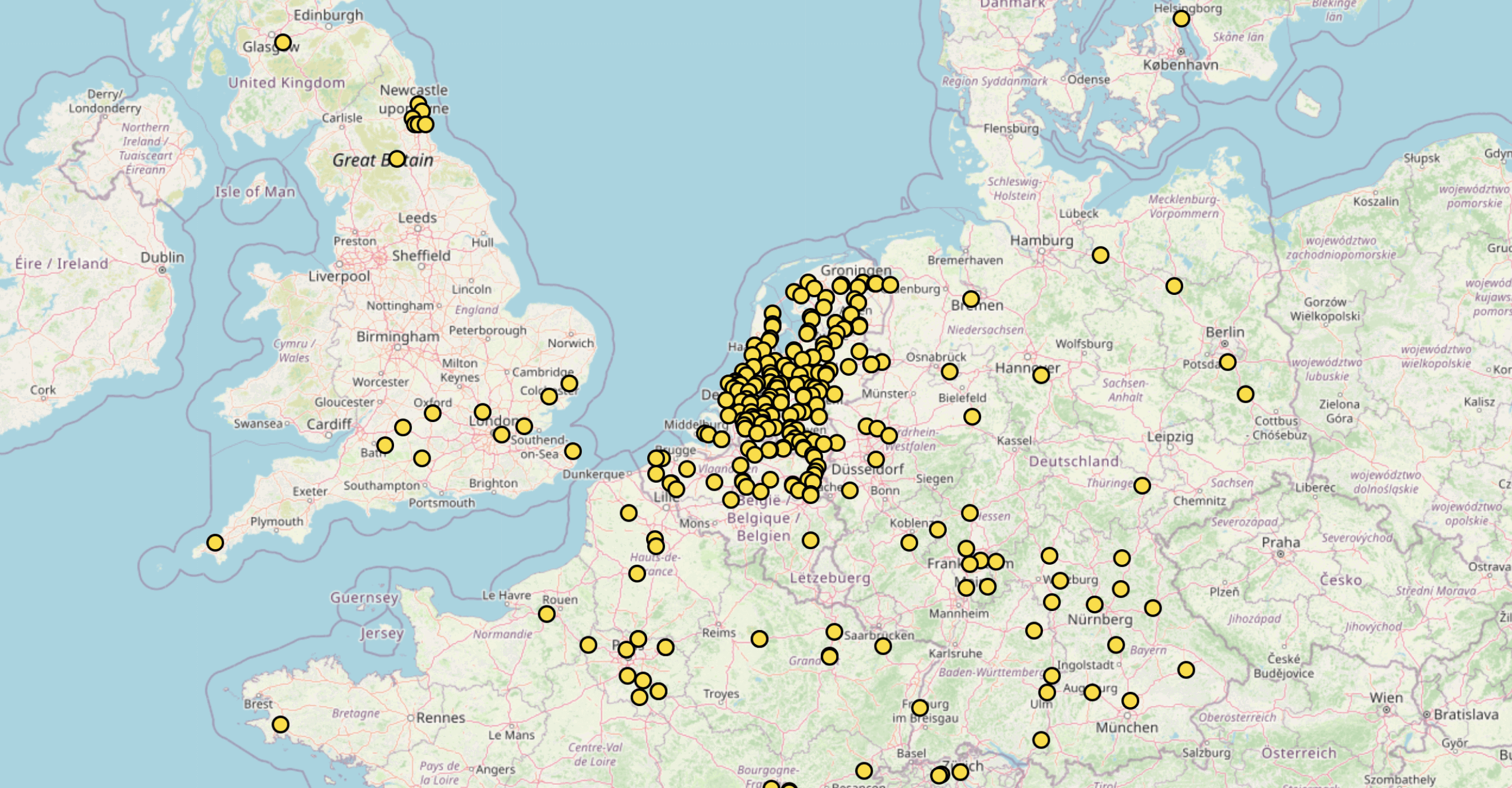Why a fast charging network is crucial
There are several ways to charge your electric car. What makes a network of fast charging stations so important? Fastned Commercial Activation Manager Luc Bronk has the answer.

Fast charging, station capacity & economies of scale
As we move towards a larger share of pure EVs on the road, it is increasingly important to consider the “total cost of infrastructure” to charge these cars, including the cost of grid connections, grid upgrades, and land use. Economies of scale can dramatically lower the cost of operating a network of fast charging stations and thus lower consumer prices.
Besides economies of scale, there are other distinct advantages of clustering fast chargers on a single site. Fast charging stations with multiple chargers and a canopy can provide great brand visibility and thus drive growth at high-traffic locations. Stations with a roof also provide cover (and can generate electricity through solar panels) and make it easier to provide additional services in the future.
Capacity of fast charging stations
Stations with two typical 50 kW fast chargers can provide a conservatively estimated maximum of 560 kWh per day. This enables 2.800 km electric kilometres per day based on the historical data we already have on fast charging behaviour of our customers:
- Fast charging stations are mostly used between 07:00 and 23:00 but for a good calculation we will use the 24 hour that a charger is operating during one day and night cycle.
- A maximum of 40% utilisation during the hours of use (40% of the chargers are in use during these 24 hours).
- On average an EV charges at 70% of the maximum that a fast charger can provide (not all EVs will be able to charge at full speed for the entire charge session).
In the coming years, more vehicles will become capable of charging at high speeds. With more powerful chargers a single station can serve more vehicles.
"A next generation station provides five times more capacity on the same land area"
What happens when we upgrade
Let’s see what happens when we upgrade a 2x 50 kW station to 2x 300 kW or to 8x 400 kW. Currently, Fastned is not building any new 50 kW stations. Technology has been advancing, and most new stations have at least two 400 kW chargers. In the calculation below, we start with the first setup to show how fast the kWh per year increases with faster and more chargers on one station.
An first generation station has a capacity of 239.232 kWh annually and an upgraded station more than 6.5 million kWh. The newest station thus provides five times more capacity on the same land area.
|
Station 1.0 |
Station 2.0 (2 chargers - 300 kW) |
Station 3.0 (2 chargers - 400 kW) |
|
| Charge speed | 50 kW | 300 kW | 400 kW |
| Number of chargers | 2 | 2 | 8 |
| Usage hours | 24 hours | 24 hours | 24 hours |
| Utilisation | 40% | 40% | 40% |
| Average charge speed | 70% of max | 70% of max | 70% of max |
| Capacity per day | 672 kWh | 4.032 kWh | 21.504 kWh |
| Capacity per year | 239.232 kWh | 1.435.392 kWh | 7.655.424 kWh |
The economics of faster charging stations
The capacity of a station 2.0 is seven to fourteen times that of an older fast charging station. However, the one-off costs (CAPEX) such as permits, grid connection, equipment, construction, installation and project management of a station equipped with four 300 kW chargers are far below that of constructing six to thirteen additional stations. Recurring costs (OPEX) such as technical maintenance and cleaning are only slightly higher for the 2.0 station. Capacity thus rises (much) faster than costs do. Therefore the cost per kWh delivered decreases (as long as a station has a certain number of customers per day).
Another advantage lies in maximising the use of a single grid connection. In many countries, electricity prices are heavily taxed. Many of these taxes are regressive: the more you consume per grid connection, the less taxes you pay per kWh.
Can the grid handle this? As long as fast charging stations are connected to medium voltage rings (10kV or 20kV), station power can be scaled up in line with the expected exponential take-off of electric vehicles. Supermarkets, high rise office buildings and large warehouses are routinely connected to the medium voltage grid with connections of 1 or 2 MW. Fast charging stations are comparable in power draw and are well within the limits of the capacity of the medium voltage grid.
"A fundamental advantage of large fast charging stations is reduced waiting time"
More chargers, less waiting
The other fundamental advantage of large fast charging stations is reduced waiting time. If we assume an average of 20 minutes to charge a vehicle, an occupied stall on average results in 10 minutes of waiting time for the next EV driver. With two chargers this is reduced to 5 minutes and with 4 chargers to less than 2,5 minutes. So a station equipped with multiple fast chargers greatly reduces waiting times.
More chargers also improve redundancy of the station. EV drivers must be able to depend on fast charging stations. Even when a single fast charger has an uptime of 99%, then the charger is still unavailable for 3.6 days per year. For a station equipped with two fast chargers with both 99% uptime, the time that both chargers are unavailable at the same time is reduced to less than one hour per year since both fast chargers operate independently of each other.
You can follow @fastned for the latest news and me @lucbronk (Commercial Activation Manager) or @rolandvanderput (Energy Sourcing Manager) for more insights into the fast charging business.